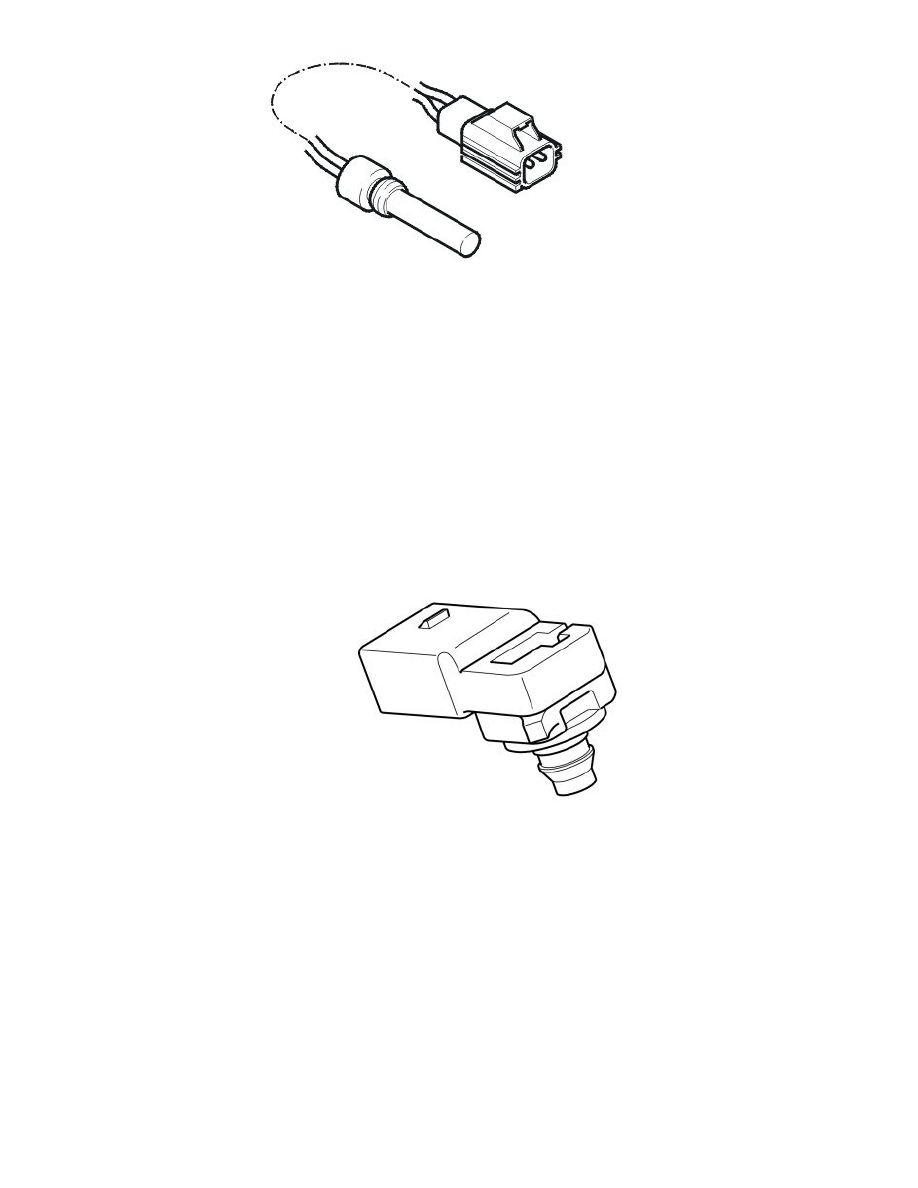XC90 FWD L6-3.2L VIN 98 B6324S (2007)

The function of the engine coolant level sensor is to alert the driver if the engine coolant level in the expansion tank is too low.
The sensor is a magnetic reed switch, which is enclosed in a pipe on the bottom of the expansion tank. Around the pipe, on the inside of the expansion
tank is a float. This float contains a magnet. When the engine coolant level is above minimum, the float is too high in the tank to affect the switch.
However if the engine coolant level falls below the minimum level, the magnetic field acts on the switch.
The sensor is supplied with voltage (signal) from the engine control module (ECM) and grounded in the body. When the engine coolant level in the
expansion tank is over a certain level the circuit closes, which produces a low signal. When the engine coolant level is below a certain level the circuit is
opened by the engine coolant level sensor, which produces a high signal. When the engine control module (ECM) detects a high signal the information
about low engine coolant level is transmitted via the Controller area network (CAN) to the driver information module (DIM), which warns the driver.
Note! There are no functions controlled by the engine which are directly connected to the low coolant level warning lamp. The Engine Control
Module (ECM) only transfers the signal which is used by the Driver Information Module (DIM).
The engine control module (ECM) cannot diagnose the engine coolant level sensor.
Manifold absolute pressure (MAP) sensor, intake
The manifold absolute pressure (MAP) sensor detects quick pressure changes in the intake manifold after the throttle. The signal from the sensor is used
by the engine control module (ECM) to supplement the mass air flow (MAF) sensor when calculating injection period.
Manifold absolute pressure (MAP) sensor, intake is located on the lower part of the intake manifold at the electronic throttle module.
The semi-conductor sensor is grounded in the control module and is supplied with power from the control module.
The resistance in the intake manifold moves the silicone membrane in the sensor, giving a signal of 0.5 - 4.5 V to the control module. Low pressure
results in low voltage, high pressure gives high voltage.
The pressure sensor can be diagnosed by the engine control module (ECM) and the sensor signal can be read off.
Fuel pressure sensor/fuel temperature sensor
